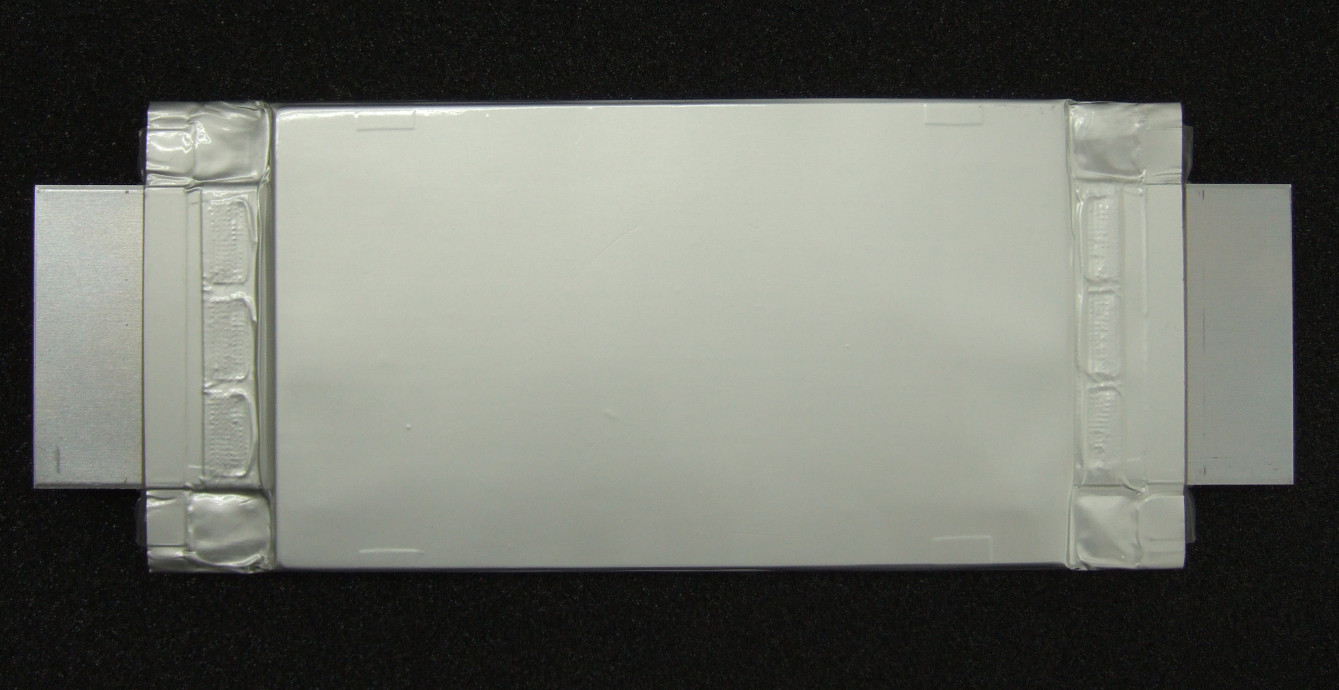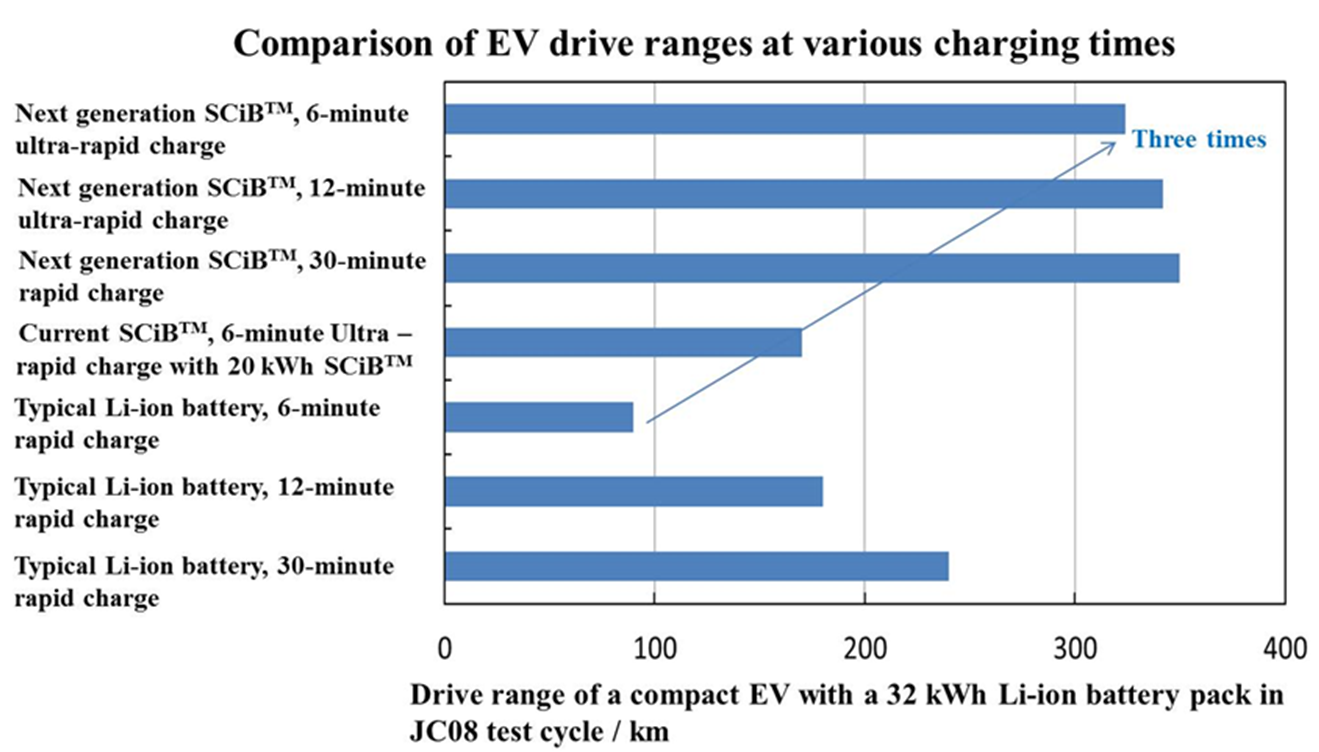Toshiba Develops Next-Generation Lithium-ion Battery with New Anode Material
; Date: October 5, 2017
Tags: Toshiba »»»» Electric Cars »»»» Electric Car Batteries

- New battery realizes driving range of electric vehicles boosted to 320km on 6-minute, ultra-rapid recharge, triple that possible with current lithium-ion battery.
- New anode material, titanium niobium oxide achieves double the capacity of the anode of current lithium-ion batteries.
3 Oct, 2017
TOKYO—Toshiba Corporation (TOKYO: 6502), an industry leader in lithium-ion battery technology, today announced the development of its next-generation SCiB, which uses a new material to double the capacity of the battery anode. The new battery offers high- energy density and the ultra-rapid recharging required for automotive applications, and will give a compact electric vehicle (EV) with a drive range of 320km* after only six minutes of ultra-rapid recharging—three times the distance possible with current lithium-ion batteries.
Toshiba launched the SCiB as a safe, long-life, fast charging lithium-ion battery in 2008. Since then, the company has constantly refined the technology and improved real-world performance. For its next-generation SCiBTM, Toshiba has developed a titanium niobium oxide anode material that has double the lithium storage capacity by volume of the graphite-based anodes generally used in lithium-ion batteries.
The new battery also offers high energy density and ultra-rapid recharging characteristics, and its titanium niobium oxide anode is much less likely to experience lithium metal deposition during ultra-rapid recharging or recharging in cold conditions—a cause of battery degradation and internal short circuiting.
Toshiba’s current SCiB employs a lithium titanium oxide anode, and is known for excellent operating characteristics in respect of safety, long life and rapid charging. It has found wide use in vehicles and industrial and infrastructure applications, including automobiles, buses, railroad cars, elevators and power plants. The high energy density of the battery, and its rapid recharging, have made important contributions to enhancing the convenience and promoting the spread of EV.
Building on this heritage, Toshiba has developed a proprietary method for synthesizing and disarranging crystals of titanium niobium oxide and storing lithium ions more efficiently in the crystal structure. The anode of the next-generation SCiB realized through this approach has double times the capacity of the anode of current lithium-ion batteries.

“We are very excited by the potential of the new titanium niobium oxide anode and the next-generation SCiB,” said Dr. Osamu Hori, Director of Corporate Research & Development Center at Toshiba Corporation. “Rather than an incremental improvement, this is a game changing advance that will make a significant difference to the range and performance of EV. We will continue to improve the battery’s performance and aim to put the next-generation SCiBTM into practical application in fiscal year 2019.”
Rigorous testing of a 50Ah prototype of the new battery has confirmed that it retains the long life cycle, low-temperature operation, excellent safety and rapid recharging characteristics of the current SCiB. The energy density by volume of battery is twice that of the current SCiB. The next-generation SCiB maintains over 90% of its initial capacity after being put through 5,000 charge/discharge cycles, and ultra-rapid recharging can be done in cold conditions, with temperatures as low as minus 10°C, in only ten minutes.
Toshiba will continue to develop higher energy density batteries that extend the range of EVs and support ultra-rapid recharging, and aims to commercialize the next-generation SCiB in fiscal year 2019.
Part of the research work on the next-generation SCiB was subsidized by Japan’s New Energy and Industrial Technology Development Organization (NEDO).
* A compact EV with a 32kWh next generation SCiB™ in JC08 test cycle

